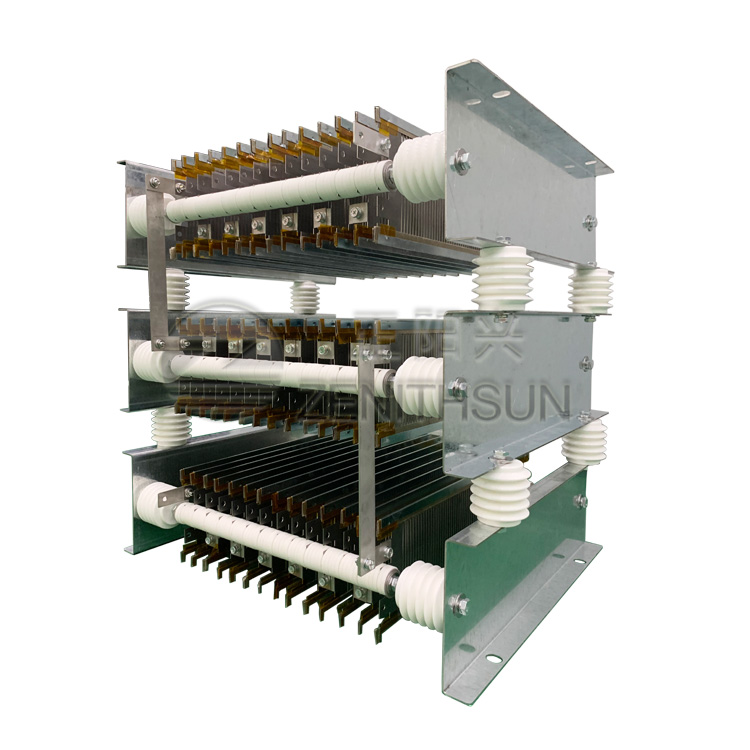Neutral grounding resistors (NGRs) play a vital role in electrical systems, particularly in enhancing safety and reliability during fault conditions. By limiting fault currents, these components protect equipment and personnel from potential hazards associated with electrical faults. This article explores the functionality, benefits, and applications of neutral grounding resistors, highlighting their significance in maintaining electrical safety.
What is a Neutral Grounding Resistor?
A neutral grounding resistor is an electrical device connected between the neutral point of a transformer or generator and the ground. Its primary purpose is to limit the current that flows through the neutral line during a ground fault condition. By introducing resistance into the grounding path, NGRs ensure that fault currents are kept at manageable levels, thereby preventing damage to equipment and reducing safety risks.
Neutral grounding resistor
How Does a Neutral Grounding Resistor Work?
The operation of an NGR is based on Ohm’s Law, which states that current (I) is equal to voltage (V) divided by resistance (R) (I=VRI=RV). Under normal operating conditions, there is no current flow through the NGR as there is no potential difference between the neutral point and ground. However, during a ground fault—when an unintended connection occurs between the electrical system and ground—a potential difference is created, allowing current to flow.In this scenario, the NGR limits the fault current by providing a controlled resistance. This action reduces the magnitude of the current flowing through the system, preventing it from reaching dangerous levels that could cause equipment damage or pose safety hazards such as electric shocks or fires. The NGR dissipates energy during a fault event while ensuring that the temperature remains within safe limits.
Benefits of Neutral Grounding Resistors
1.Equipment Protection: By limiting fault currents, NGRs help protect transformers, generators, and other critical electrical equipment from damage during ground faults. This protection can significantly reduce repair costs and downtime.
2.Enhanced Safety: NGRs minimize the risk of arc flash incidents and electric shock hazards by controlling fault currents. This feature is especially important in industrial settings where personnel safety is paramount.
3.Stabilization of Phase Voltages: During fault conditions, NGRs help stabilize phase voltages within the system. This stabilization ensures that connected equipment operates reliably without experiencing voltage fluctuations that could lead to failures.
4.Facilitation of Fault Detection: By limiting fault currents to safe levels, NGRs enable protective relays and monitoring devices to function effectively. This capability aids in quickly locating and isolating faults, minimizing system downtime.
5.Operational Continuity: In some cases, NGRs allow for temporary continued operation during a single line-to-ground fault. This feature is crucial for maintaining service continuity in critical applications such as data centers and healthcare facilities.
Applications of Neutral Grounding Resistors
Neutral grounding resistors are commonly used in various electrical systems, including:
1.Low-Voltage Distribution Systems: Found in industrial plants and commercial buildings, NGRs are essential for protecting low-voltage networks from ground faults.
2.Medium-Voltage Distribution Systems: In medium-voltage applications (1 kV to 36 kV), NGRs limit fault currents and enhance system stability.
3.Generator Neutral Grounding: Generators connected to isolated systems utilize NGRs to prevent excessive fault currents during ground faults.
4.Transformer Neutral Grounding: Transformers in grounded wye configurations benefit from NGRs to safeguard against damaging fault currents.
5.Renewable Energy Systems: Increasingly used in solar power plants and wind farms, NGRs provide grounding and fault protection in renewable energy applications.
Conclusion
Neutral grounding resistors are essential components in modern electrical systems, providing critical protection against ground faults while enhancing overall safety and reliability. By limiting fault currents and stabilizing voltages, NGRs play a pivotal role in safeguarding equipment and personnel across various industries. As electrical systems continue to evolve, understanding and implementing neutral grounding resistors will remain vital for ensuring operational integrity and safety in power distribution networks.







